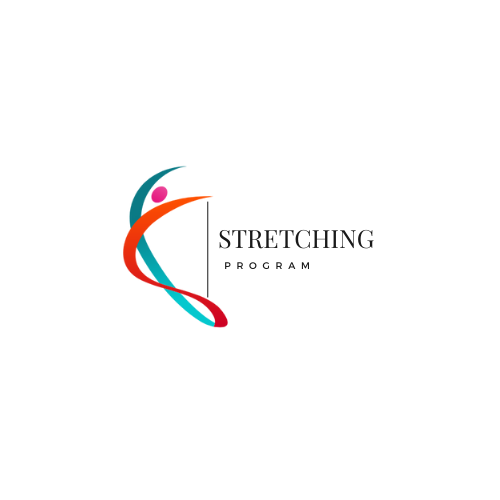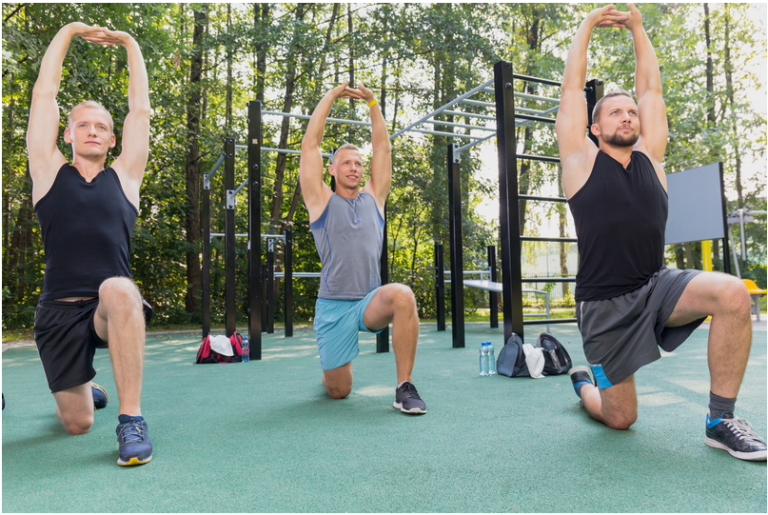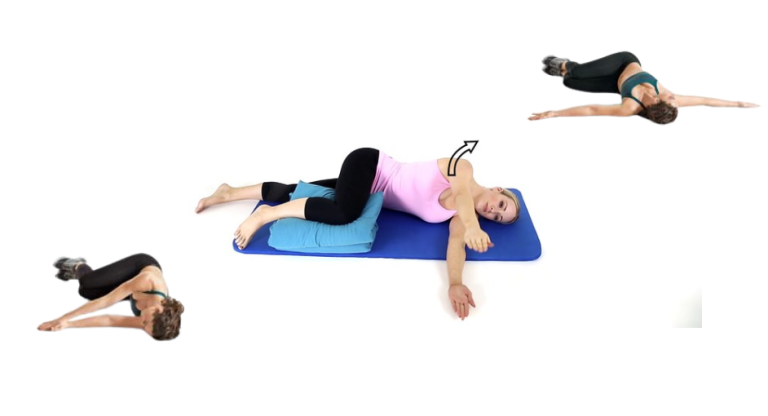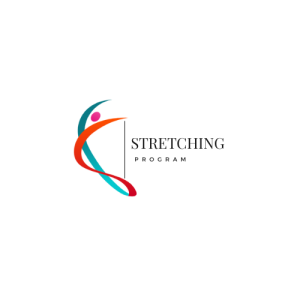
Stretching Gracilis Muscle: Why It Matters to Strengthening Exercises and Relief Pain
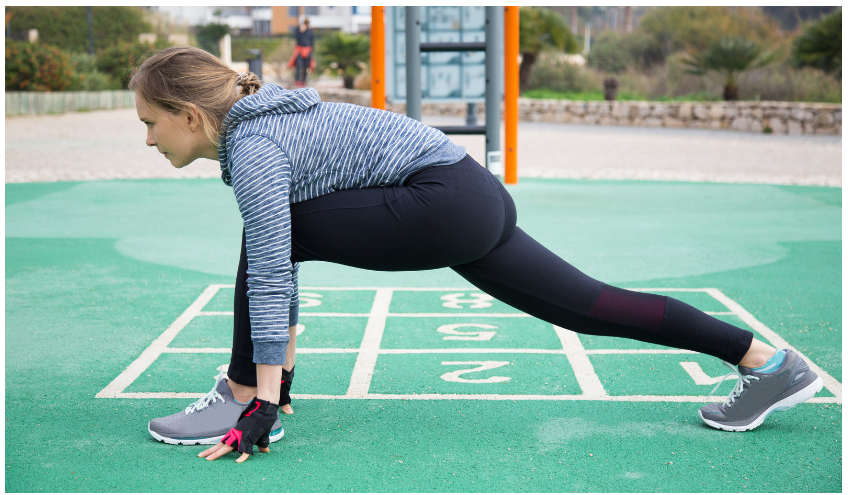
The gracilis is a slender muscle that runs along the inner thigh, from the pubic bone to the tibia. It is responsible for hip adduction and assists with knee flexion and medial rotation. The gracilis muscle is often overlooked, but it plays an important role in your mobility and stability. If you have tight or weak gracilis muscles, you may experience pain in the groin or thigh, reduced range of motion, and increased risk of injury. Stretching the gracilis muscle can help prevent these problems and improve your performance and well-being.
Do you suffer from stretching gracilis muscle pain? Learn how to relieve it with this hyperbolic stretching review.
Key Takeaways
In this article, you will learn:
- What are the common causes of gracilis muscle pain, and how do you recognize the signs you may have a gracilis injury
- How to perform effective stretches for the gracilis muscle, with step-by-step instructions and illustrations
- How to incorporate strengthening exercises for the gracilis muscle into your routine
- What are the benefits of stretching the gracilis muscle, and how to make the most of it
By the end of this article, you will better understand the function and importance of the gracilis muscle and how to keep it healthy and strong. Read on to find out more!
What are the common causes of gracilis muscle pain?
The gracilis muscle can become painful due to various factors, such as:
- A muscle strain occurs when the fibers are overstretched or torn, usually due to sudden or excessive force. Muscle strain can cause pain, swelling, bruising, and difficulty moving the affected area. The severity of the strain can range from mild to severe, depending on the extent of the damage.
- Overuse injuries occur when the muscle is subjected to repetitive movements or prolonged stress without adequate rest and recovery. Overuse injuries can cause inflammation, stiffness, and chronic pain. Some common activities that can lead to overuse injuries of the gracilis muscle include running, cycling, dancing, and martial arts.
- Tightness occurs when the muscle is shortened or contracted due to lack of stretching, poor posture, or prolonged sitting. Tightness can cause reduced flexibility, impaired blood flow, and increased tension in the muscle. Tightness can also affect the surrounding muscles and joints, causing pain and dysfunction.
- Bursitis occurs when the bursa, a fluid-filled sac that cushions the joint, becomes inflamed or infected. Bursitis can cause pain, swelling, and reduced mobility. One of the bursae that can be affected by the gracilis muscle is the pes anserinus, located at the inner side of the knee, where the gracilis, sartorius, and semitendinosus muscles insert. Bursitis of the pes anserinus can cause pain in the knee, especially when bending or straightening the leg.
- Nerve compression: This occurs when a nerve is pinched or irritated by a nearby structure, such as a bone, muscle, or ligament. Nerve compression can cause pain, numbness, tingling, or weakness in the area supplied by the nerve. One of the nerves that can be affected by the gracilis muscle is the obturator nerve, which runs through the groin and innervates the inner thigh muscles. Compression of the obturator nerve can cause pain in the groin due to a pinched nerve, especially when moving the leg.

How to recognize the signs you may have a gracilis injury?
If you have a gracilis injury, you may experience some or all of the following symptoms:
- Pain in the inner thigh, groin, or knee, especially when moving the leg or applying pressure
- Swelling, bruising, or redness in the affected area
- Difficulty or inability to perform hip adduction or knee flexion
- Reduced range of motion or stiffness in the hip or knee joint
- Muscle spasms or cramps in the inner thigh
- Weakness or instability in the leg
You should consult a doctor or a physical therapist for a proper diagnosis and treatment if you have any of these symptoms. Depending on the cause and severity of your injury, you may need to rest, ice, compress, and elevate the affected area, take anti-inflammatory medication, or undergo surgery. You may also need to do some rehabilitation exercises to restore the function and strength of your gracilis muscle.
How to stretch the gracilis muscle?
Stretching the gracilis muscle can help relieve pain, improve flexibility, and prevent further injury. Here are some effective stretches for the gracilis muscle that you can do at home or the gym. You will need a mat, a towel, and a bench for some of these stretches. Before you start, warm up your muscles with light cardio or dynamic movements. You should also listen to your body and avoid any stretch that causes sharp or severe pain. Hold each stretch for about 30 seconds and repeat 2 to 3 times on each side.
Butterfly stretch
This is a classic stretch for the inner thigh muscles, including the gracilis. To do this stretch:
- Sit on the floor with your legs bent and your feet together.
- Hold your feet with your hands and gently press your knees toward the floor.
- Keep your back straight and your chest lifted.
- You should feel a stretch in the groin and inner thigh area.
Seated gracilis stretch
This variation of the butterfly stretch targets the gracilis muscle more specifically. To do this stretch:
- Sit on the floor with your legs bent and your feet together.
- Place a towel under your right knee and lift it off the floor.
- Hold the towel with your right hand and pull your right knee toward your right shoulder.
- Keep your left knee pressed toward the floor and your back straight.
- You should feel a stretch in the right gracilis muscle.
Standing gracilis stretch
You can do This simple stretch anywhere, as long as you have something to support your leg. To do this stretch:
- Stand next to a bench or a chair and place your right foot on it, keeping your right leg straight.
- Lean forward from your hips and reach your left hand toward your right foot.
- Keep your back flat and your left leg slightly bent.
- You should feel a stretch in the right gracilis muscle and the back of your right thigh.
Lying gracilis stretch
This is a more advanced stretch that requires some flexibility and balance. To do this stretch:
- Lie on your back with your legs straight and your arms by your sides.
- Lift your right leg off the floor and bend your right knee toward your chest.
- Hold your right shin with your hands and pull your right knee toward your right shoulder.
- Keep your left leg straight and your hips on the floor.
- You should feel a stretch in the right gracilis muscle and the front of your right thigh.
Cross-legged gracilis stretch
This advanced stretch stretches the piriformis muscle, which is located deep in the buttocks. To do this stretch:
- Sit on the floor with your legs crossed, your right leg over your left leg.
- Place your right hand on the floor behind you and your left hand on your right knee.
- Gently twist your torso to the right, pushing your right knee toward the floor.
- Keep your back straight, and your shoulders relaxed.
- You should feel a stretch in the right gracilis and piriformis muscles.
How to strengthen the gracilis muscle?
Strengthening the gracilis muscle can help improve its function and prevent injury. Some exercises target the gracilis muscle and the other hip adductor muscles. For some of these exercises, you will need a resistance band and a stability ball. Before you start, warm up your muscles with light cardio or dynamic movements. You should also listen to your body and avoid any exercise that causes sharp or severe pain. Perform 10 to 15 repetitions of each exercise and repeat 2 to 3 times on each side.
Side-lying leg lift
This simple exercise works the gracilis muscle and the other inner thigh muscles. To do this exercise:
- Lie on your left side with your legs straight and your right leg on top of your left.
- Support your head with your left hand and place your right hand on the floor in front of you for balance.
- Lift your right leg off your left leg, keeping your toes pointed forward and your hips stacked.
- Lower your right leg back to the starting position without touching your left leg.
- Repeat the movement with your right leg, switch sides, and do the same with your left leg.
Standing leg crossover
This dynamic exercise challenges the gracilis muscle and the other hip adductor muscles. To do this exercise:
- Stand with your feet shoulder-width apart and your arms by your sides.
- Lift your right leg off the floor and cross over your left leg, keeping your toes pointed forward and your hips square.
- Please return to the starting position, lift your left leg off the floor, and cross it over your right leg.
- Alternate the movement with your right and left legs, moving quickly and smoothly.
Banded side step
This functional exercise activates the gracilis muscle and the other hip adductor muscles. To do this exercise:
- Place a resistance band around your ankles and stand with your feet hip-width apart and your knees slightly bent.
- Step your right foot to the right, keeping your toes pointed forward and your hips level.
- Bring your left foot toward your right foot, keeping the band tight and your knees slightly bent.
Ball squeeze
This isometric exercise strengthens the gracilis muscle and the other hip adductor muscles. To do this exercise:
- Lie on your back with your legs bent and your feet flat on the floor.
- Place a stability ball between your knees and squeeze it with your inner thigh muscles.
- Hold for 5 seconds, then release the squeeze.
- Repeat the movement, keeping your hips and back on the floor.
What are the benefits of stretching the gracilis muscle?
Stretching the gracilis muscle can have many benefits for your health and fitness, such as:
- Relieving pain and stiffness in the groin, thigh, and knee areas
- Improving flexibility and range of motion in the hip and knee joints
- Preventing injuries and enhancing recovery from muscle strain, overuse, or bursitis
- Improving blood circulation and oxygen delivery to the muscle tissue
- Reducing stress and tension in the muscle and the surrounding structures
- Improving posture and alignment of the pelvis and lower limbs
- Enhancing performance and efficiency in activities that involve hip adduction and knee flexion, such as running, cycling, dancing, and martial arts
How to make the most of stretching the gracilis muscle?
To maximize the benefits of stretching the gracilis muscle, you should follow some best practices, such as:
- Stretch regularly, at least 2 to 3 times a week, preferably after a warm-up or a workout
- Stretch gently and gradually without bouncing or forcing the movement.
- Breathe deeply and relax your body and mind while stretching.
- Hold each stretch for about 30 seconds and repeat 2 to 3 times on each side.
- Vary your stretches and try different positions and angles to target different muscle parts.
- Listen to your body and avoid any stretch that causes sharp or severe pain.
- Consult a doctor or a physical therapist if you have any medical conditions or injuries that may affect your ability to stretch safely and effectively with your right and left feet, moving to the right for ten steps and then to the left for 10 steps.
FAQs about Stretching Gracilis Muscle
How often do I need to stretch my gracilis muscle?
You should stretch your gracilis muscle at least three times a week if you need more. This will help you maintain flexibility and avoid muscle imbalances leading to pain and injury.
Will stretching my gracilis muscle ease my knee pain?
Stretching your gracilis muscle can help reduce knee pain by loosening up the inner thigh area. But if your knee pain is persistent or severe, you should see a doctor or a physiotherapist for a proper diagnosis and treatment.
Is it okay to feel some discomfort when I stretch my gracilis muscle?
Feeling a mild stretching sensation is normal when you work on your gracilis muscle. But if you feel any sharp or intense pain, you should stop the stretch and seek medical advice if the pain continues.
How can stretching my gracilis muscle improve my sports performance?
Stretching your gracilis muscle can improve your sports performance by enhancing your flexibility and range of motion in the hips. This can help you perform better in activities that involve side-to-side movements, such as tennis, soccer, and basketball.
What should I be careful of when I stretch my gracilis muscle?
Before stretching your gracilis muscle, warm up your muscles with some light cardio or dynamic movements. Also, pay attention to your body and don’t overstretch yourself. Increase the intensity and duration of the stretches gradually over time.
Can I stretch my gracilis muscle if I have a history of injury?
If you have a history of injury or are recovering from a specific condition, you should consult a healthcare professional before you start any stretching routine. They can give you personalized advice and ensure that stretching is safe and suitable for your situation.
Summary
The gracilis is a slender muscle that runs along the inner thigh, from the pubic bone to the tibia. It is responsible for hip adduction and assists with knee flexion and medial rotation. The gracilis muscle can become painful due to various factors, such as muscle strain, overuse, tightness, bursitis, or nerve compression.
Stretching the gracilis muscle can help relieve pain, improve flexibility, and prevent further injury. Strengthening the gracilis muscle can help improve its function and prevent injury. Stretching and strengthening the gracilis muscle can benefit your health and fitness, such as improving blood circulation, reducing stress, improving posture, and enhancing performance.
Here are some key points to remember:
- The gracilis is a slender muscle that runs along the inner thigh, from the pubic bone to the tibia.
- The gracilis muscle is responsible for hip adduction and assists with knee flexion and medial rotation.
- The gracilis muscle can become painful due to various factors, such as muscle strain, overuse, tightness, bursitis, or nerve compression.
- Stretching the gracilis muscle can help relieve pain, improve flexibility, and prevent further injury.
- Strengthening the gracilis muscle can help improve its function and prevent injury.
Stretching and strengthening the gracilis muscle can benefit your health and fitness, such as improving blood circulation, reducing stress, improving posture, and enhancing performance. We hope you enjoyed this article and learned something new about the gracilis muscle and how to stretch it.
If you have any questions or feedback, please leave a comment below. And don’t forget to check out our recent blog posts for more tips and advice on fitness and wellness. Thank you for reading, and happy stretching! 😊
References
- Gracilis Muscle Pain: Causes, Stretches, Strength Exercises1
- Gracilis Muscle: Anatomy, Functions, and Treatment2
- Unlocking Grace: Effective Stretches for the Gracilis Muscle3
- The gracilis and semitendinosus muscles: a morphometric study on 18 cadavers4
- Gracilis: Origins, insertions, innervation, and action5
